
James I the Conqueror was King of Aragon, Count of Barcelona, and Lord of Montpellier from 1213 to 1276; King of Majorca from 1231 to 1276; and Valencia from 1238 to 1276. His long reign—the longest of any Iberian monarch—saw the expansion of the Crown of Aragon in three directions: Languedoc to the north, the Balearic Islands to the southeast, and Valencia to the south. By a treaty with Louis IX of France, he wrested the County of Barcelona from nominal French suzerainty and integrated it into his crown. He renounced northward expansion and taking back the once Catalan territories in Occitania and vassal counties loyal to the County of Barcelona, lands that were lost by his father Peter II of Aragon in the Battle of Muret during the Albigensian Crusade and annexed by the Kingdom of France, and then decided to turn south. His great part in the Reconquista was similar in Mediterranean Spain to that of his contemporary Ferdinand III of Castile in Andalusia. One of the main reasons for this formal renunciation of most of the once Catalan territories in Languedoc and Occitania and any expansion into them is the fact that he was raised by the Knights Templar crusaders, who had defeated his father fighting for the Pope alongside the French, so it was effectively forbidden for him to try to maintain the traditional influence of the Count of Barcelona that previously existed in Occitania and Languedoc.
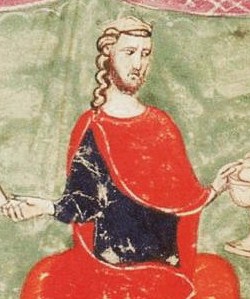
Peter III of Aragon was King of Aragon, King of Valencia, and Count of Barcelona from 1276 to his death. At the invitation of some rebels, he conquered the Kingdom of Sicily and became King of Sicily in 1282, pressing the claim of his wife, Constance II of Sicily, uniting the kingdom to the crown.

Peter IV, called the Ceremonious, was from 1336 until his death the King of Aragon and also King of Sardinia and Corsica, King of Valencia, and Count of Barcelona. In 1344, he deposed James III of Majorca and made himself King of Majorca.

John I, called by posterity the Hunter or the Lover of Elegance, but the Abandoned in his lifetime, was the King of Aragon from 1387 until his death.
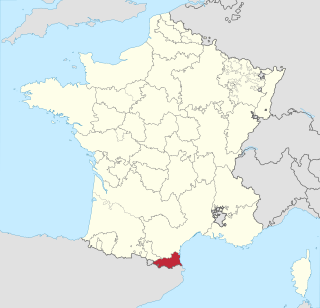
Roussillon is one of the historical counties of the former Principality of Catalonia. It may also refer to Northern Catalonia or French Catalonia, the first used by Catalan-speakers and the second used by French-speakers, corresponding roughly to the present-day southern French département of Pyrénées-Orientales save Fenouillèdes. A 1998 survey found that 34% of respondents stated they speak Catalan, and a further 21% understand it.
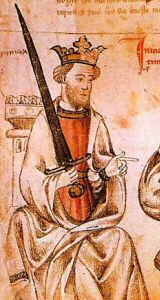
Sancho IV of Castile called the Brave, was the King of Castile, León and Galicia from 1284 to his death. He was the second son of Alfonso X and Yolanda, daughter of James I of Aragon.

The Duchy of Athens was one of the Crusader states set up in Greece after the conquest of the Byzantine Empire during the Fourth Crusade, encompassing the regions of Attica and Boeotia, and surviving until its conquest by the Ottoman Empire in the 15th century.
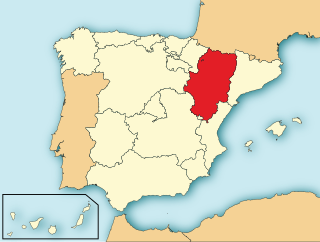
The Kingdom of Aragon was a medieval and early modern kingdom on the Iberian Peninsula, corresponding to the modern-day autonomous community of Aragon, in Spain. It should not be confused with the larger Crown of Aragon, that also included other territories — the Principality of Catalonia, the Kingdom of Valencia, the Kingdom of Majorca, and other possessions that are now part of France, Italy, and Greece — that were also under the rule of the King of Aragon, but were administered separately from the Kingdom of Aragon.

The Crown of Aragon was a composite monarchy, also nowadays referred to as a confederation of individual polities or kingdoms ruled by one king, with a personal and dynastic union of the Kingdom of Aragon and the County of Barcelona. At the height of its power in the 14th and 15th centuries, the Crown of Aragon was a thalassocracy controlling a large portion of present-day eastern Spain, parts of what is now southern France, and a Mediterranean "empire" which included the Balearic Islands, Sicily, Corsica, Sardinia, Malta, Southern Italy and parts of Greece. The component realms of the Crown were not united politically except at the level of the king, who ruled over each autonomous polity according to its own laws, raising funds under each tax structure, dealing separately with each Corts or Cortes. Put in contemporary terms, it has sometimes been considered that the different lands of the Crown of Aragon functioned more as a confederation than as a single kingdom. In this sense, the larger Crown of Aragon must not be confused with one of its constituent parts, the Kingdom of Aragon, from which it takes its name.
In many ways, the history of Spain is marked by waves of conquerors who brought their distinct cultures to the peninsula. After the passage of the Vandals and Alans down the Mediterranean coast of Hispania from 408, the history of medieval Spain begins with the Iberian kingdom of the Arianist Visigoths (507–711), who were converted to Catholicism with their king Reccared in 587. Visigothic culture in Spain can be seen as a phenomenon of Late Antiquity as much as part of the Age of Migrations.

The Judicate of Arborea was one of the four independent judicates into which the island of Sardinia was divided in the Middle Ages. It occupied the central-west portion of the island, wedged between Logudoro to the north and east, Cagliari to the south and east, and the Mediterranean Sea to the west. To the north east and beyond Logudoro was located Gallura, with which Arborea had far less interaction. Arborea outlasted her neighbours, surviving well into the 15th century. The earliest known judicial seat was Tharros. Kingdom of Arborea at the times of its maximum expansion occupied the whole island's territory, except the cities of Alghero and Cagliari.
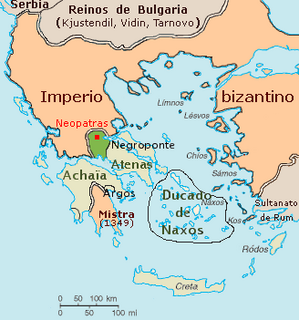
The Duchy of Neopatras was a Catalan-dominated principality in southern Thessaly, established in 1319. Officially part of the Crown of Aragon, the duchy was governed in conjunction with the neighbouring Duchy of Athens by the local Catalan aristocracy, who enjoyed a large degree of self-government. From the mid-14th century, the duchies entered a period of decline: most of the Thessalian possessions were lost to the Serbian Empire, internal dissensions arose, along with the menace of Turkish piracy in the Aegean and the onset of Ottoman expansion in the Balkans. Enfeebled, the Catalan possessions were taken over by the Florentine adventurer Nerio I Acciaioli in 1385–1390.
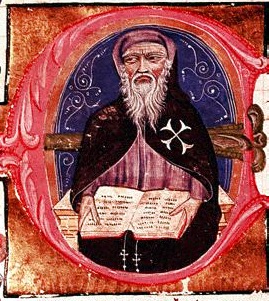
Juan Fernández de Heredia was a Spanish knight of Aragon who served as Grand Master of the Knights Hospitaller from 24 September 1377 to his death. His tenure was occupied by the "affair of Achaea", the persistent, but ultimately fruitless, efforts by the Knights to acquire the Principality of Achaea in southern Greece. He was also a great patron of the translation and composition of historiographical works in the Aragonese language and a counsellor to two Kings of Aragon.

Nerio I Acciaioli or Acciajuoli was the actual ruler of the Duchy of Athens from 1385. Born to a family of Florentine bankers, he became the principal agent of his influential kinsman, Niccolò Acciaioli, in Frankish Greece in 1360. He purchased large domains in the Principality of Achaea and administered them independently of the absent princes. He hired mercenaries and conquered Megara, a strategically important fortress in the Duchy of Athens, in 1374 or 1375. His troops again invaded the duchy in 1385. The Catalans who remained loyal to King Peter IV of Aragon could only keep the Acropolis of Athens, but they were also forced into surrender in 1388.

Louis Fadrique a Catalan nobleman who was Count of Salona, as well as lord of various other towns in Central Greece from ca. 1365 until his death in 1382. In 1375–1381 he also served as the vicar-general of the twin duchy of Athens and Neopatras.
Simon Atumano was the Bishop of Gerace in Calabria from 23 June 1348 until 1366 and the Latin Archbishop of Thebes thereafter until 1380. Born in Constantinople, Atumano was of Greco-Turkish stock, his surname deriving from the word "Ottoman." He was a humanist and an influential Greek scholar during the Italian Renaissance.
Juande Urtubia was a Navarrese royal squire who led first a contingent of fifty men-at-arms on an expedition to recover the Kingdom of Albania (1376–1377) and later a large army against Thebes and Boeotia, which he conquered in 1379.

The Catalan Civil War, also called the Catalonian Civil War or the War against John II, was a civil war in the Principality of Catalonia, then belonging to the Crown of Aragon, between 1462 and 1472. The two factions, the royalists who supported John II of Aragon and the Catalan constitutionalists, disputed the extent of royal rights in Catalonia. The French entered the war at times on the side on John II and at times with the Catalans. The Catalans, who at first rallied around John's son Charles of Viana, set up several pretenders in opposition to John during the course of the conflict. Barcelona remained their stronghold to the end: with its surrender the war came to a close. John, victorious, re-established the status quo ante.

Alonso de Aragón or Alfonso de Aragón was Archbishop of Zaragoza, Archbishop of Valencia and Lieutenant General of Aragon. Born in Cervera, he was an illegitimate son of Ferdinand II of Aragon by a Catalan noblewoman called Aldonza Ruiz de Ivorra (1452–1516). In his youth his tutor was Antonio Geraldini, brother of the humanist scholar Alessandro Geraldini.
James Fadrique was a Catalan nobleman who became Count of Salona, as well as lord of various other towns in Central Greece from ca. 1355 until his death in 1366.















